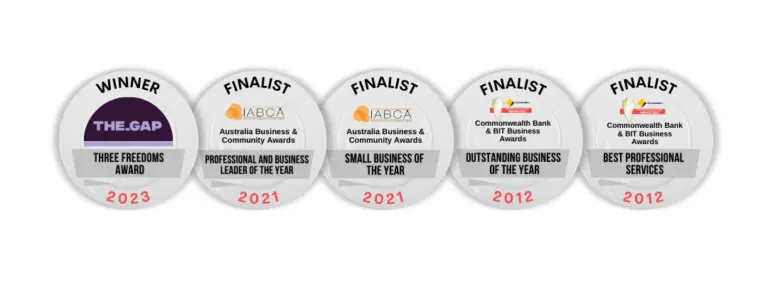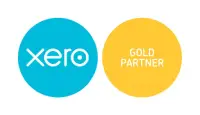I hate budget night. Unlike other accountants and tax nerds who love live and breathe taxes I have no real interest in the country’s GPD rate. Or the tax take or if I will be $5.25 better off a week. How do they work that out anyway and do I really care about $5.25 a week? You can barely get a coffee for that.
All I care about is has the GDP gone up or down because if it goes up that is a good thing.
I also hate the night because all the tax nerds go into overdrive. Its like they have been pumped full of steroids, heroin, or cocaine because my inbox lights up like the Starship Enterprise because they all send me lots of information about the budget and there seems to be a competition on who will be the first.
It gets worse because its all written in Hebrew, and they keep giving me section numbers of Acts I care little about and will never use again.
And to be honest there is no rush. Most of the proposals relate to future years and months. Finding out the day after the budget or a few days later is not really going to make a difference so I never understand the rush to be first.
Anyway, that is my rant for the day. But if you do not want to read section numbers and want a simple summary read on. This is my version of cutting out the nonsense.
I have just returned from the UK. One of the reasons why I left the UK was because I did not feel the country’s finances (and the government) were going the right way. I can see that 15 years later what bad finance management and bad governments can do to a country.
And that is why in many ways I fear for Australia. Australia requires major tax reform, but each successive government thinks short term and that means we miss opportunities on how we will increase productivity and make Australia a success.
This budget was very short term – issues that will be around for the next 12 months. And while that is important, as business owners, we all know we must think long term for business survival and success.
Personal income tax measures
It’s the elephant in the room the Treasurer did not want to see or talk about. But the devil is usually in the detail, and this was a whopper when it came to details.
Usually, Budget Reports are full of pretty pie charts, bar charts and graphics explaining how people are better off but I think there was some embarrassment here so not a chart in sight.
That is because if you earn over $200,000 you are going to see your tax bills fall by over $9,000 a year. In comparison if you earn $50,000 you only get a $125 tax cut a year. Not exactly in Labour’s DNA but they are stuck with it hence the lack of a loudspeaker.
There’s more. The cost of the tax cut will coast $61Bn over 4 years. That is massive when you consider the cost-of-living package (see below) costs $14Bn.
It’s gets worse because the Low/ Middle Income Offset has been axed meaning those on low middle income will lose a further $1,500.
Cost of Living Package
5.5 million households will receive up to $500 energy rebates. How much you will get will depend on where you live and your income. 1 million businesses will also receive this. Again, it depends where the business is. I know – not helpful – but, hey, I am only the messenger.
The budget also includes measures to support vulnerable Australians, including an $11.3 billion investment to fund a 15 per cent pay rise for aged care workers, $9 billion in additional childcare subsidies, $2.2 billion for primary healthcare, and $1.9 billion to extend sole parent payments until children turn 14.
Small business measures
Full expensing is gone effective 30 June 2023!
From 1 July 2023 until 30 June 2024, the Government will temporarily increase the instant asset write-off threshold from $1,000 to $20,000 and remove the ‘no ceiling’ limit on asset purchases.
If you need to buy expensive equipment or a car you might want to do if before 30 June 2023.
New Energy Incentive for small businesses
Small and medium businesses will be able to deduct an additional 20% of the cost of eligible depreciating assets that support electrification and more efficient use of energy. Up to $100,000 of total expenditure will be eligible for the Small Business Energy Incentive, with the maximum bonus deduction being $20,000.
Lodgement penalty amnesty program
A lodgement penalty amnesty program is being provided for small businesses with an aggregated turnover of less than $10 million to encourage them to re-engage with the tax system.
The amnesty will remit failure-to-lodge penalties for outstanding tax statements lodged in the period from 1 June 2023 to 31 December 2023 that were originally due during the period from 1 December 2019 to 28 February 2022.
Superannuation Gets Complex!
- Superannuation Guarantee Payments
A business owner who pays Superannuation is not going to be a fan of this measure.
From 1 July 2026, employers will be required to pay their employees’ superannuation guarantee entitlements on the same day that they pay salary and wages.
Currently, employers are only required to pay their employees’ superannuation guarantee on a quarterly basis. That’s 4 times a year. If you pay wages weekly, you now need to make 52 Superannuation payments. Crap.
I get the reasons why and it should help businesses plan their cashflow. Its just the red tape and burden of dealing with it.
The measure will also help employee superannuation balances. The earlier funds get money the quicker it can compound and grow.
- Earnings for superannuation balances above $3 million
From 1 July 2025, the superannuation tax rates will be higher for individuals with a total superannuation balance exceeding $3 million.
Individuals with a total superannuation balance of less than $3 million will not be affected.
The new rules mean that tax at 30%, up from 15%, will be payable for earnings to the proportion of an individual’s total superannuation balance that is greater than $3 million.
Earnings relating to assets below the $3 million threshold will continue to be taxed at 15%, or 0% if held in a retirement pension account.
But the new rules are complex and includes taxing a Superfund on capital gains that have not been realised. Yeah, I know it is a stupid idea and the calculations we will have to do is mind blowing. Hopefully there will be a change of minds before 2025.
Capital Allowances
- Capital allowances – Accelerating the capital works tax deduction for ‘Build-To-Rent Developments’
For eligible new build-to-rent projects where construction commences after 7:30pm (AEST) on 9 May 2023 (Budget night), the Government will:
- increase the rate for the capital works tax deduction to 4% per year; and
- reduce the final withholding tax rate on eligible fund payments from managed investment trust (‘MIT’) investments from 30% to 15%.



